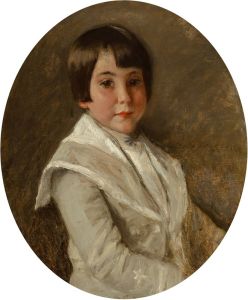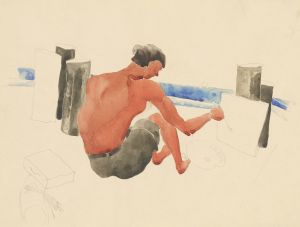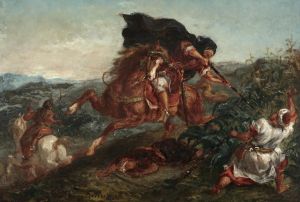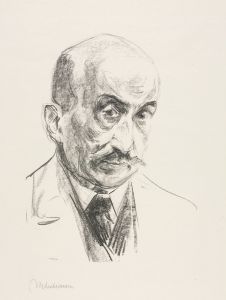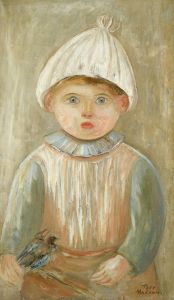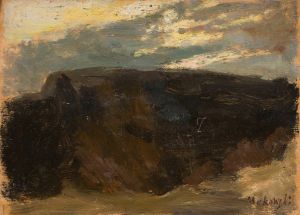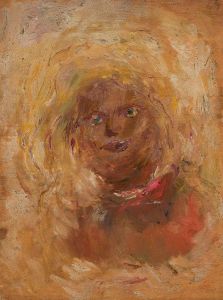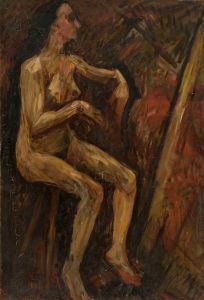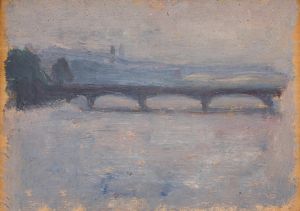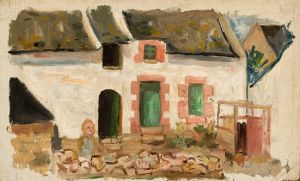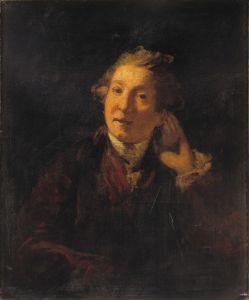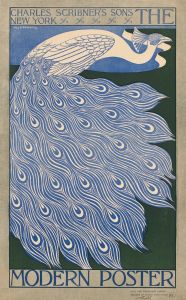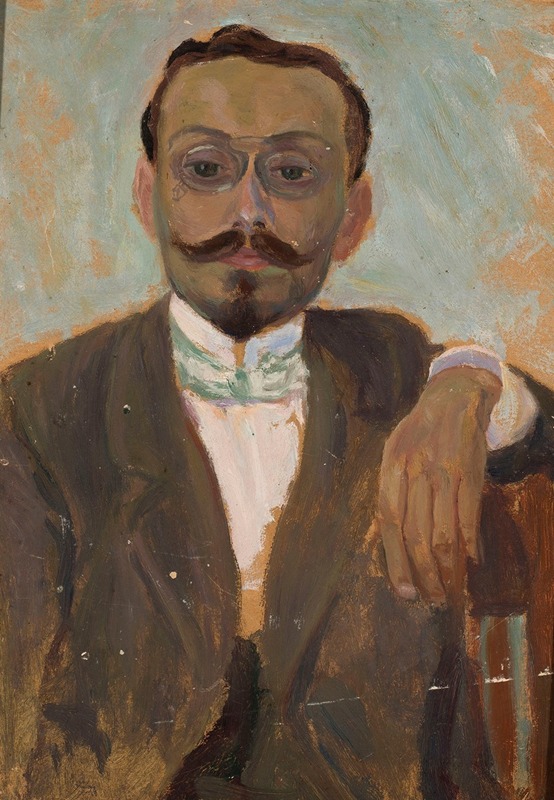
Portrait of sculptor Bolesław Bałzukiewicz
A hand-painted replica of Tadeusz Makowski’s masterpiece Portrait of sculptor Bolesław Bałzukiewicz, meticulously crafted by professional artists to capture the true essence of the original. Each piece is created with museum-quality canvas and rare mineral pigments, carefully painted by experienced artists with delicate brushstrokes and rich, layered colors to perfectly recreate the texture of the original artwork. Unlike machine-printed reproductions, this hand-painted version brings the painting to life, infused with the artist’s emotions and skill in every stroke. Whether for personal collection or home decoration, it instantly elevates the artistic atmosphere of any space.
"Portrait of Sculptor Bolesław Bałzukiewicz" is a painting by the Polish artist Tadeusz Makowski. Makowski, known for his distinctive style that often combined elements of folk art with modernist influences, created this work as part of his broader exploration of portraiture and character study. The painting is a testament to Makowski's skill in capturing the essence of his subjects through a unique blend of realism and abstraction.
Tadeusz Makowski was born on January 29, 1882, in Oświęcim, Poland. He studied at the Academy of Fine Arts in Kraków, where he was influenced by the teachings of prominent Polish artists of the time. Makowski's early work was characterized by a focus on landscapes and scenes of everyday life, but his style evolved significantly after he moved to Paris in 1908. In Paris, he became part of the vibrant artistic community and was exposed to various avant-garde movements, including Cubism, which left a lasting impact on his artistic development.
The subject of the painting, Bolesław Bałzukiewicz, was a notable Polish sculptor. Bałzukiewicz was recognized for his contributions to sculpture in Poland, and his works often reflected a deep understanding of form and structure. The portrait by Makowski captures Bałzukiewicz with a sense of introspection and dignity, highlighting the sculptor's thoughtful demeanor.
Makowski's approach to this portrait is characterized by his use of muted colors and soft brushstrokes, which create a sense of intimacy and focus on the subject's expression. The background is kept simple, allowing the viewer's attention to remain on Bałzukiewicz's face and posture. This technique is typical of Makowski's portraiture, where the emphasis is placed on the psychological depth of the sitter rather than on elaborate settings or details.
Throughout his career, Makowski was known for his ability to convey emotion and character through his portraits. His works often feature a subtle interplay of light and shadow, which adds to the mood and atmosphere of the painting. In "Portrait of Sculptor Bolesław Bałzukiewicz," this interplay is evident in the way Makowski captures the nuances of Bałzukiewicz's expression, suggesting a contemplative and introspective nature.
Makowski's time in Paris was crucial to his artistic development, as it allowed him to interact with other artists and experiment with new styles and techniques. Despite the influence of modernist movements, Makowski maintained a strong connection to his Polish roots, often incorporating elements of Polish folk art into his work. This blend of influences is evident in his portraits, which combine a modernist sensibility with a deep appreciation for traditional forms.
"Portrait of Sculptor Bolesław Bałzukiewicz" is a significant example of Makowski's portraiture, showcasing his ability to capture the essence of his subjects with sensitivity and insight. The painting reflects Makowski's unique artistic vision and his commitment to exploring the complexities of human character through art.





